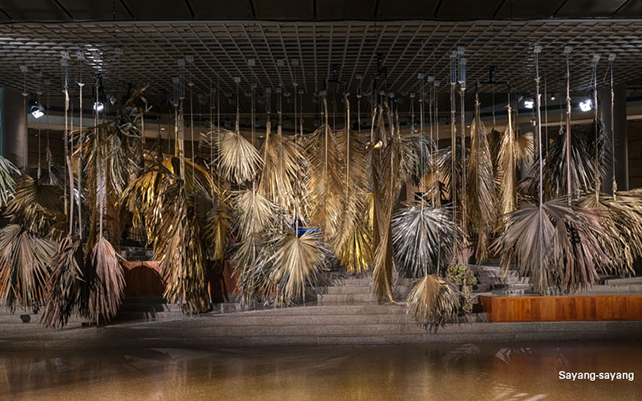
“Sayang”, a Malay expression, is a term of endearment used to express love and affection. When cooing a baby to sleep, parents will say “sayang-sayang” to convey a sense of tenderness and as an affirmation of their love.
This Humid House takes the familiar cradle net, or sarong buai, as the jump-off point to explore the influence of rituals and culturally situated practices on our vernacular experiences. Traditionally, sarong buai are batik cradles attached to hammock springs used in households across parts of Southeast Asia to rock babies to sleep. With the generous assistance of the National Parks Board, leaves sustainably harvested from bismarckia, corypha and coconut palm trees around Singapore are attached to automated machinery to mimic the movement of these cradles. By replacing the baby with leaves of larger-than-life proportions, the installation evokes a variety of associations, prompting the viewer to reflect on ideas of volition, protection, coddling, sustainability and culture.
The use of leaves references botanical motifs commonly found in batik. Viewed collectively, the leaves form a tapestry that celebrates the significance of batik in Singapore culture. Using leaves that are at varying stages of maturity, the colour palette is an evolving blend of green, yellow and brown hues with accents of gold–colours associated with the batik-making process. Since olden days, dried leaves have acted as a source of natural dyes in batik while paraffin wax the colour of molten gold is used to create intricate batik patterns. The installation pays tribute to the cultural practices and symbols of the past, which continue to reverberate into our future.
Venue: Esplanade Concourse
When: 18 Sep - 29 Nov 2020,
By: Esplanade







